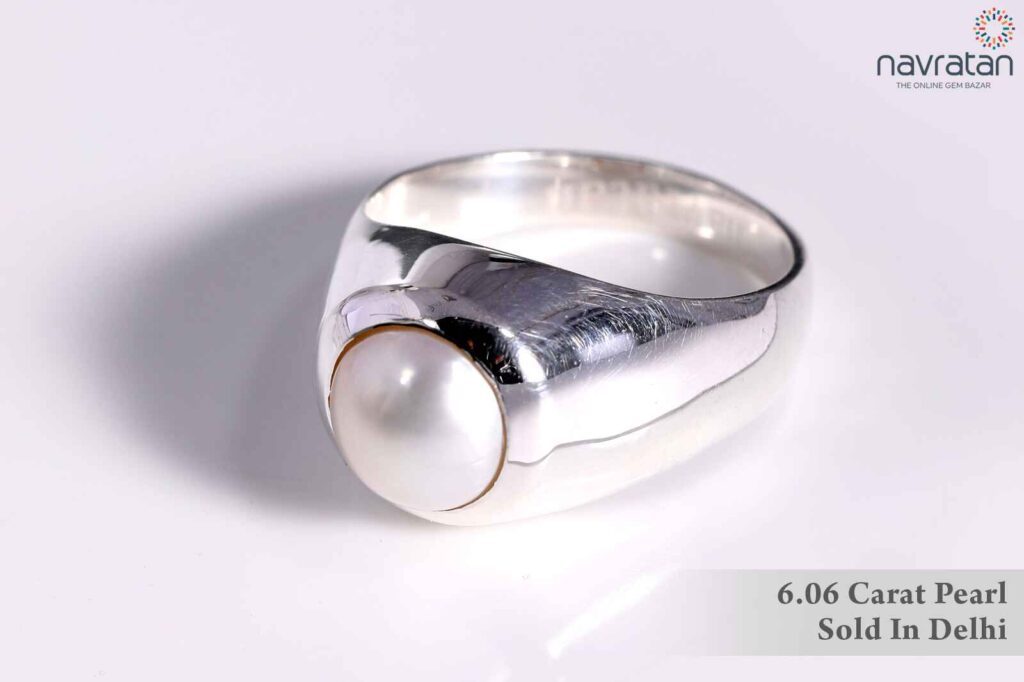Pearls are timeless gemstones in the world of fashion. They have been regarded as the symbol of purity and wisdom since ancient times. Today, they bestow modern-day versatility and remain an ever-evolving treasure in jewelry design. In this blog, we will consider the types of pearls and how these gems have evolved from ancient to contemporary styles.
What are Pearl Gemstones?
Pearl stone called Moti in Hindi and Mukta in Sanskrit are cherished as the symbols of wealth, wisdom, and spirituality. In ancient Chinese culture, they were thought to protect against fire and dragons. In Ancient Rome, these organic gems were a status symbol for the upper class and nobility. Pearls worn by brides were considered lucky in many cultures as they bring happiness in married life.
Types of Pearls
- Natural Moti: Considered highly rare, they are formed without human intervention.
- Cultured Pearls: Accessible gemstones introduced by Kokichi Mikimoto in the early 20th century. They are created by inserting a tiny bead into the mollusk. The nacre is further secreted around the shell.
- Freshwater pearls are grown in rivers and lakes and are known for their wide variety of shapes and colors.
Pearls in Antique Jewelry
Initially, pearls were considered bad luck in the Victorian era, but with time, they became jewelry of significance. They were crafted in intricate designs, and the Art Nouveau period brought organic, flowing designs, and Moti stone took center stage in beautiful pendants and brooches. In the Art Deco period, pearls were incorporated into bold, geometric designs, often paired with diamonds and colored gemstones like sapphires, rubies, and emeralds.
Modern Pearls in Contemporary Jewelry
The minimalist style, popular in today’s jewelry, gives pearls a fresh, edgy appeal, allowing them to be bold and versatile. Baroque pearls are irregularly shaped gems that provide a unique look to the jewelry designs. These gems gave a bold look with creative designs, from asymmetrical earrings to statement necklaces.
Moti stones are often layered with chains, chokers, and different lengths to create an eclectic and personalized look. Colored pearls give a fantastic look to the jewelry.
Popularity of Pearl Gems Today
Celebrities and influencers are embracing Mukta Stone in new and inventive ways. These are no longer considered jewelry for special occasions but a must-have for everyday styling. Pearl engagement rings are popular nowadays, and their unconventional look adds elegance. With cultured Moti gaining popularity as sustainable gems, these organic stones are highly valued.
Pearls are no longer confined to women’s jewelry. Men’s fashion has also embraced Mukta ratna, with notable male celebrities flaunting jewelry on the red carpet.
Customizing these stones with colored gemstones like emeralds, sapphires, rubies, or diamonds enhances the look of the jewelry in many folds.
How to Choose the Perfect Pearl?
Luster: The most crucial quality aspect of Moti is its luster. It is the sharpness and intensity of the reflection on the gems’ surface. High-quality Mukta stones have a mirror-like luster, which indicates a thick nacre coating.
Shape: While traditional round pearls remain the most valuable, baroque Keshi pearls are irregularly shaped stones. It adds uniqueness and contemporary appeal to the jewelry.
Color: From classic white to bold black, brown, subtle pink, and even green, pearl colors can be chosen to match personal style or skin tone.
Size: Generally, the larger the gemstone, the more valuable it is, but smaller Moti work well for everyday wear and layered designs.
To conclude, natural Moti stone is perfect for any jewelry. This gemstone is an excellent option for those looking for astrological advantages. Other than this, this stone is also loved for jewelry pieces.














